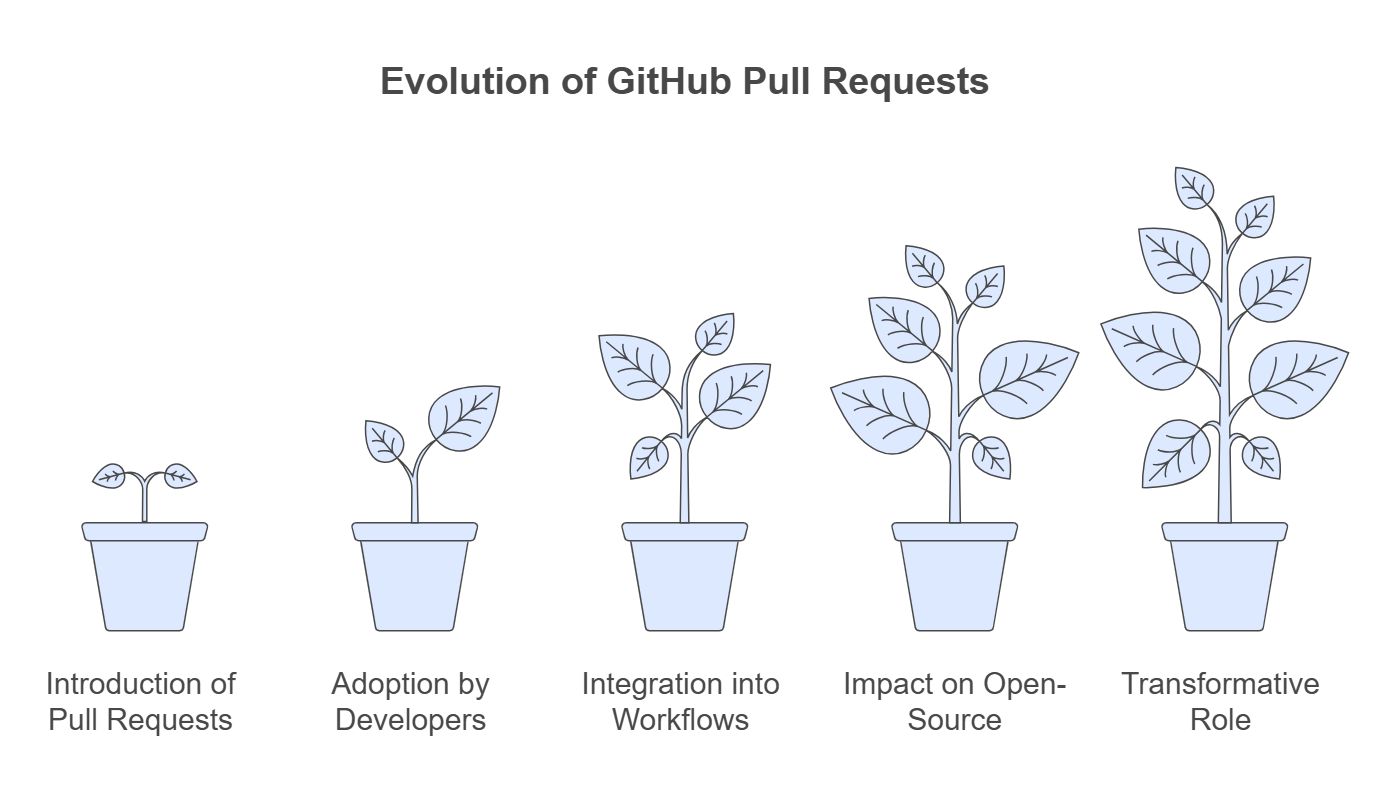Discover the History and Evolution of Pull Requests on GitHub: A Tool for Collaborative Coding
5+ Pull Requests Unveiling the Fascinating History of GitHub”
GitHub has revolutionized software development by offering a platform where developers collaborate efficiently. Among its key features is the concept of pull requests, which has become central to both open-source and enterprise projects. This article explores the history, evolution, and significance of pull requests, as well as their impact on modern coding practices.
The Origins of Pull Requests
Founded in 2008, GitHub quickly gained popularity as a platform for managing Git repositories. In 2009, the platform introduced a groundbreaking feature—pull requests. Prior to this, developers relied on less efficient methods like email threads or patch files for reviewing and merging changes. The introduction of pull requests allowed developers to propose, review, and discuss changes directly through the platform, simplifying the process of collaboration.
How Pull Requests Work
The pull request process enables developers to propose changes to a codebase in a structured and reviewable manner. Here’s how it typically works:
- Forking and Cloning: A developer forks a repository, clones it locally, and creates a branch to work on new features or fix bugs.
- Committing Changes: Changes are committed to the branch, keeping the main codebase unaffected.
- Opening a Pull Request: After completing the changes, a pull request is opened to notify maintainers and collaborators.
- Code Review: Collaborators review the changes, providing feedback and suggestions.
- Merging: Once the changes are approved, they are merged into the main branch.
The Evolution of Pull Requests
GitHub has continuously improved pull requests to cater to the growing needs of developers. Here are a few key developments:
- 2013: Web-Based Merging: The platform introduced web-based merging, allowing maintainers to complete the process directly through the interface.
- 2016: Review Requests: The ability to assign specific reviewers to pull requests streamlined the review process.
- 2018: Draft Mode: GitHub introduced draft pull requests to indicate work-in-progress contributions.
- 2020: GitHub Actions: The integration with GitHub Actions enabled automation of testing, deployment, and CI/CD pipelines.
These enhancements have contributed to GitHub’s role as a leader in collaborative software development.

No Operating System Found: What It Means and How to Fix It
Advantages of Using Pull Requests
Pull requests offer several benefits that enhance modern development practices:
- Improved Code Quality: Regular reviews ensure that only high-quality code is merged into the project.
- Efficient Collaboration: Developers can collaborate seamlessly, regardless of their location.
- Transparency: The history of changes is transparent, fostering accountability.
- Conflict Resolution: Merging workflows minimize code conflicts.
- CI/CD Integration: Pull requests integrate well with continuous integration and deployment tools, automating key tasks.
Challenges and Best Practices
While highly beneficial, pull requests do present challenges:
- Delays in Merging: Long review times can slow development.
- Merge Conflicts: Handling conflicts requires careful attention.
To overcome these obstacles, developers should follow these best practices:
- Provide Clear Descriptions: Clear explanations of changes help reviewers understand their purpose.
- Break Down Large Changes: Small, incremental changes are easier to review.
- Communicate Promptly: Engage with reviewers to address feedback quickly.
- Automate Testing: Running automated tests helps identify issues early.
The Future of Pull Requests
As GitHub continues to evolve, the future of pull requests looks promising. New features like AI-driven code review tools and enhanced conflict resolution are expected to further streamline workflows and improve collaboration.
FAQs about Pull Requests
- What is a pull request? A pull request is a feature that allows developers to propose code changes, initiate reviews, and integrate changes into the main branch.
- Why are pull requests important? They enable collaboration, improve code quality, and maintain a clear history of changes.
- How do you create a pull request? After forking a repository and making changes, you can create a pull request to propose your modifications.
- What’s the difference between a draft and a regular pull request? A draft pull request indicates that changes are not ready for final review, whereas a regular pull request is ready for merging.
- Can pull requests be automated? Yes, automation tools like GitHub Actions can trigger tests and deployments when a pull request is opened or updated.

